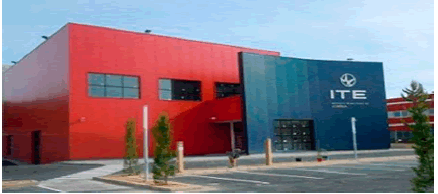Effect of NASICON/PVdF based hybrid solid electrolyte composition on the electrode/electrolyte interface properties of Solid-State Lithium Batteries
Keywords: Electrolyte, Electrode
Abstract
Massive research activities have been initiated in order to solve different issues of solid state batteries, specially centred in solid electrolyte development. However, in spite of the good performance of solid electrolyte as such the interfacial contact of solid electrolyte with the electrode active materials is a serious challenge. Important parameters are based on interface impedance and electrochemical and mechanical stability with electrode materials. In order to guarantee an acceptable lifetime and cycling stability of solid batteries, stable interfaces with high contact area are required between electrolytes and active materials. Among this, the mechanical stability of the cell components and interfaces represents a serious challenge for the lifetime of solid batteries. The low elasticity of some ceramic electrolyte materials, in particular oxide electrolytes may not allow for external pressing. Differently, the easily processable polymer electrolytes are already applied with success in lithium metal batteries but must operate at elevated temperatures (above 60 °C) due to ionic conductivity limitations. The development of hybrid electrolytes comprising ceramics and polymers might be the ultimate solution to achieve the required interfacial properties in solid-state batteries.In this study, the effect of composition of NASICON/PVdF based hybrid solid electrolyte on graphite electrode/solid electrolyte has been studied. For that, different solutions containing different NASICON/PVdF ratio has been prepared and deposited over graphite electrodes by casting method. The electrode/solid electrolyte interfacial properties have been characterized using electrochemical techniques such as linear sweep voltammetry for the determination of electrochemical stability at the interface and electrochemical impedance spectroscopy for the determination of interfacial resistance. The results obtained show that, the combination of ceramic type electrolytes with PVdF-HFP based polymer electrolyte could be a promising alternative to achieve balance properties at interface by improved ionic conductivity given by ceramic electrolyte and better mechanical stability given by polymer electrolytes.

Biography:
Leire Zubizarreta Sáenz de Zaitegui is bachelor’s in chemistry by the University of Basque Country in 2004. PhD in Chemistry by the University of Oviedo in 2009. She carried out the PhD thesis in INCAR-CSIC research center in Oviedo. Author and co-author of more than 20 contributions in recognised international journals and author of two patents related to materials for energy applications.

Speaker Publications:
1. Schnell J, Günther T, Knoche T, Vieider C; Köhler L, Alexander J, Keller M, Passerini D, Reinhart G, (2018) Journal of Power Sources, 382: 160-175
2. Shicheng Y, Schmohl S, Liu Z, Hoffmeyer M, Schön N, Hausen F, Tempel H, Kungl H, Wiemhöfer H, Rüdiger A, (2019) Journal of Materials Chemistry A, 7:3882-3894
3. Liu Q, Liu Y, Jiao X, Song Z, Sadd M, Xu X, Matic A, Xiong S, Song J, (2019) Energy Storage Materials, 23: 105-111
4. Bonizzoni S, Ferrara C, Berbenni V, Anselmi-Tamburini U, Mustarelli P, Teadi C (2019) Phys.chem. chem. Phys. 21:6142-6149
5. Yu X, Manthiram A (2018) 11:527-543
22nd International Conference on Advanced Energy Materials and Research; Webinar- July 15-16, 2020.
Abstract Citation:
Leire Zubizarreta, Effect of NASICON/PVdF based hybrid solid electrolyte composition on the electrode/electrolyte interface properties of Solid-State Lithium Batteries, Advanced Energy Materials 2020, 22nd International Conference on Advanced Energy Materials and Research; Webinar- July 15-16, 2020.
